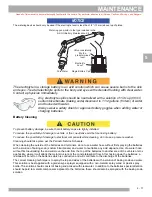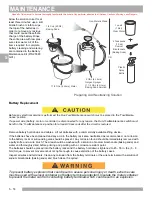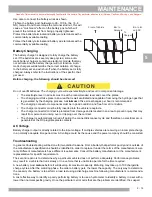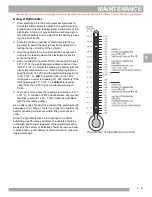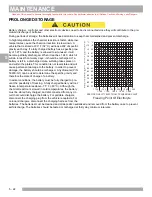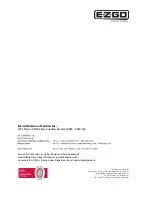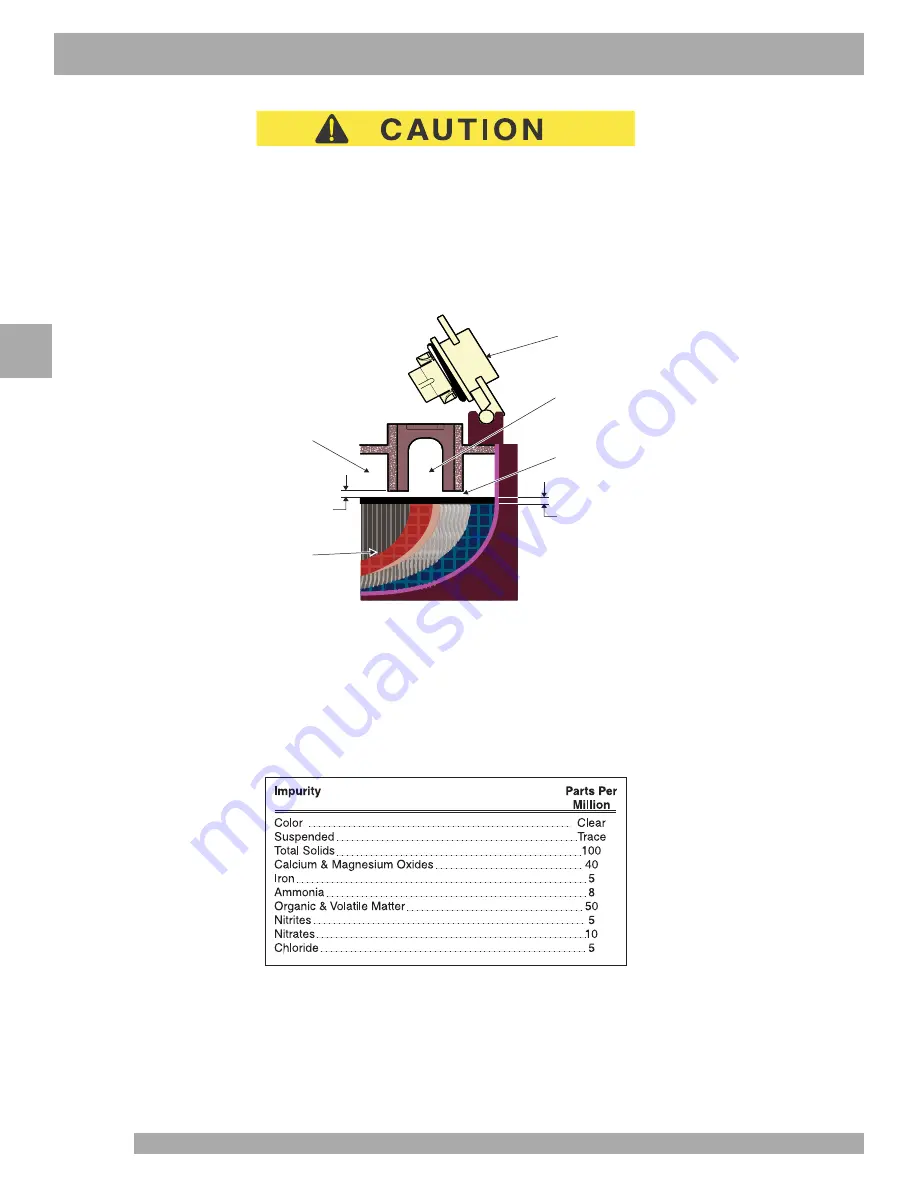
MAINTENANCE
Read all of this manual to become thoroughly familiar with this vehicle. Pay particular attention to all Notices, Cautions, Warnings, and Dangers.
5 - 16
5
DO NOT overfill batteries. The charging cycle will expel electrolyte and result in component damage.
A battery being charged will ’gas’ with the majority of the gassing taking place at the end of the charging cycle. This
gas is hydrogen with is lighter than air. Water and sulphuric acid droplets will be carried out of the battery vents by
the hydrogen gas, however, this loss is minimal. If the battery electrolyte level is too high, the electrolyte will block
the vent tube and the gas will force it out of the vent tube and battery cap. The water will evaporate but the sulphuric
acid will remain where it can damage vehicle components and the storage facility floor. Sulphuric acid loss will
weaken the concentration of acid within the electrolyte and reduce the life of the battery.
Over the life of the battery, a considerable amount of water is consumed. It is important that the water used be pure
and free of contaminants that could reduce the life of the battery by reducing the chemical reaction. The water must
be distilled or purified by an efficient filtration system. Water that is not distilled should be analyzed and, if required,
filtration installed to permit the water to meet the requirements of the water purity table.
Even if the water is colorless, odorless, tasteless and fit for drinking, the water should be analyzed to see that it does
not exceed the impurity levels specified in the table.
Automatic watering devices such as the one included in the Battery Maintenance Kit (P/N 25587-G01) can be used
with an approved water source. These watering devices are accurate, easy to use and allow for rapid filling. They
also maintain the correct electrolyte level within the battery cells.
Vent Cap
Gas Vent
Vent
Expansion
Space
Plates
1/2” (13 mm)
1/4” to 3/8”
(6 mm to 10mm)
Electrolyte level should be at least
1/2” (13mm) above the plates and 1/4”
to 3/8” (6 to 10 mm) below vent
Correct Electrolyte Level
Water Purity Table
















